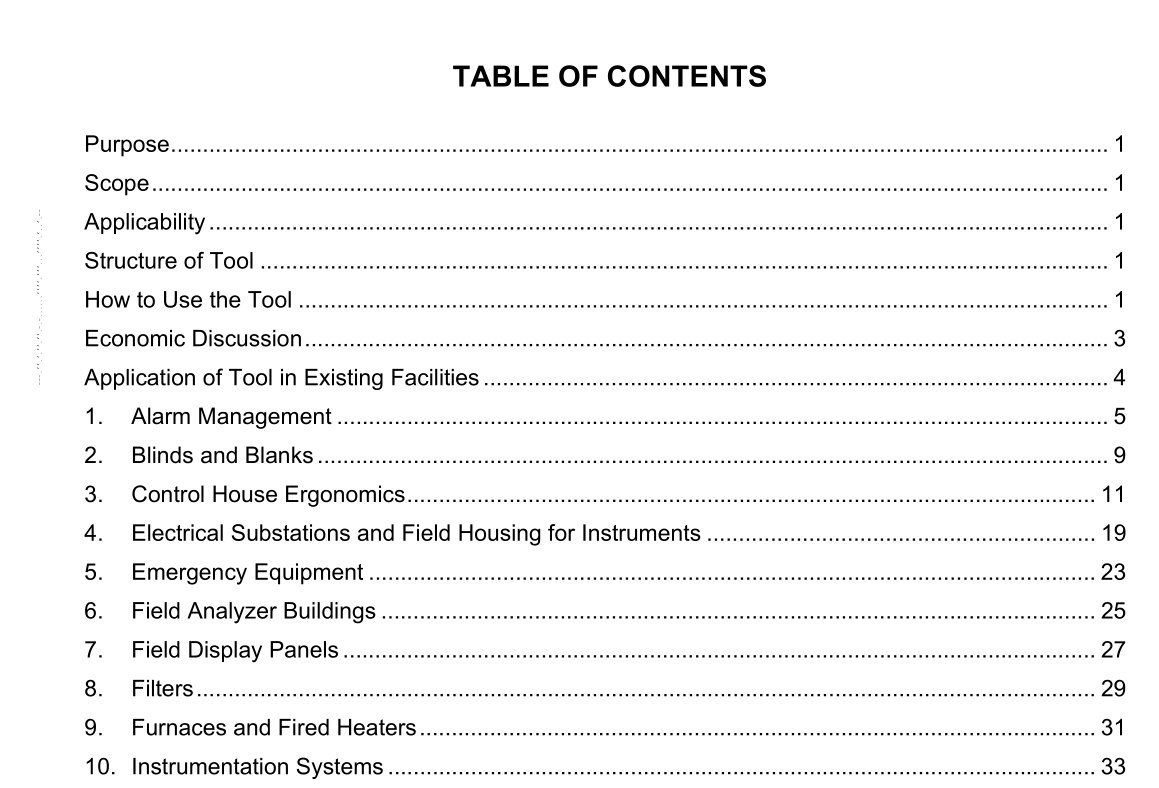API HUMAN FACTORS pdf download

API HUMAN FACTORS pdf download.Human Factors in New Facility Design Tool
The Tool is best applied during the early design phases of projects where early hazard identification and risk assessments are utilized in the overall risk management support of the project. Depending on a specific company’s project management system, this could include the planning phase, the equipment design phase, and possibly through the construction and startup phases, since safety personnel are always trying to identify potential hazards during all stages of a project. Different parts of the Tool will be more applicable during one phase than another. Companies are encouraged to apply the different parts of the Tool to their specific project management systems. Following are some examples of how the Tool may be applied during the various phases of a project: 1. Planning / Design Considerations / Front End Loading Phase: In the initial phases of a project the human factors design standards and requirements for equipment are agreed upon and a plan is prepared on how the human factors considerations will be incorporated into the project equipment designs. During this phase the Tool may be used to help determine spacing requirements, especially around the larger equipment. For example, paragraph 14B (p. 40) of the Tool points out that for reactors containing toxic catalyst enough space should be provided to allow for proper catalyst removal. Similar spacing/accessing requirements are provided throughout the Tool as in paragraph 13E (p. 39) for machinery and 18E (p. 47) for exchanger valves. All these considerations need to be made in the early phases of the project to ensure that adequate plot plan spacing is provided.2. Detailed Design Phase: Application of human factors principles is most prevalent during the detailed design phase of projects, usually during preliminary hazard identification and risk assessment studies. Essentially all equipment addressed in the Tool has at least one paragraph with requirements that need to be specified during the detailed design phase of the project. For example, Tool paragraph 9A (p. 31) may be used to appropriately locate the furnace pilot fuel valve and the igniter. Similarly, paragraph 17A (p. 44) addresses the human needs for accessing tank instrumentation. Paragraphs 1A (p. 5) on alarm management and 4A (p. 19) on emergency egress from substations are two more examples of how the Tool may be used to apply human factors in plant designs. During the model review phase of the project the design specifications made during the detailed design phase can be confirmed and/or altered/corrected. Technological advances are making it increasingly possible and financially acceptable to use 3-Dimensional (3-D) computer models in projects of all sizes. 3-D visualization of plant layouts during model reviews is making it easier to apply human factors principles during plant designs, particularly in the area of equipment access for both operations and maintenance. 3-D models may be used to confirm or correct the designs specified during the detailed design phase and may also be used to apply many of the human factors potential solutions provided in the Tool.For example, a 3-D model review may be the most appropriate way to determine whether a fire monitor has a clear line of sight to a fire-prone piece of equipment, as described in the Tool paragraph 5A (p. 23). Similarly, paragraph 9E (p. 31) may be more appropriately applied during the model review phase to identify access to specific equipment for both operations and maintenance personnel. Other examples where the Tool may be best applied during model reviews is paragraph 15A (p. 41), where access to safety showers is discussed; paragraph 4H (p. 20), where access to electrical equipment is mentioned; and paragraph 16F (p. 43), where the extension bars to ladder safety gauges on elevated platforms are discussed.









